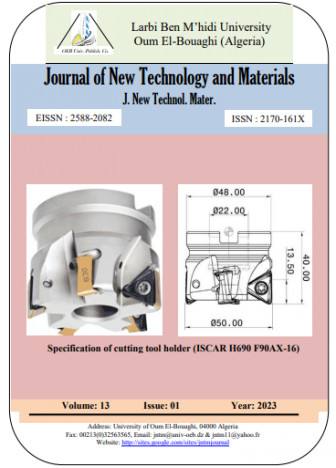Hydrogen diffusion mechanism in polysilicon solar cells deduced from analysis of dopant deactivation and open-circuit voltage evolution
Keywords:
solar cell, boron deactivation, hydrogenation, open-circuit voltage, hydrogen diffusionAbstract
The present work reveals a hydrogen diffusion mechanism in a polysilicon solar cell in order to achieve an effective
passivation of defects and then high photovoltaic conversion efficiency. Plasma hydrogenation treatments were performed
on polysilicon and monosilicon solar cells to witness, respectively, the evolution of the open-circuit voltage and the boron
activation profile. The results obtained show clearly that the open-circuit voltage improves as the microwave plasma power
increases. Nevertheless, the measured values are much higher for a less doped phosphorus emitter, which confirms that the
hydrogen diffusion in the bulk of silicon is more prevented as well as the level of doping is high. However, the tendency of
the open circuit-voltage values to saturation at high microwave plasma powers indicates that hydrogen can also produce new
defects in polysilicon. This last observation has been well verified on monosilicon n+
p solar cells. Also, hydrogen neutralizes
boron and generates a concentration gradient between the boundary of the space charge zone and the depth of the p base
region. As a result, we have admitted the existence of an electric field that encourages deep hydrogen diffusion atoms in the
bulk of polysilicon. Moreover, the appropriate analysis of these results allowed us to propose a credible mechanism for
hydrogen diffusion in polysilicon solar cells.





